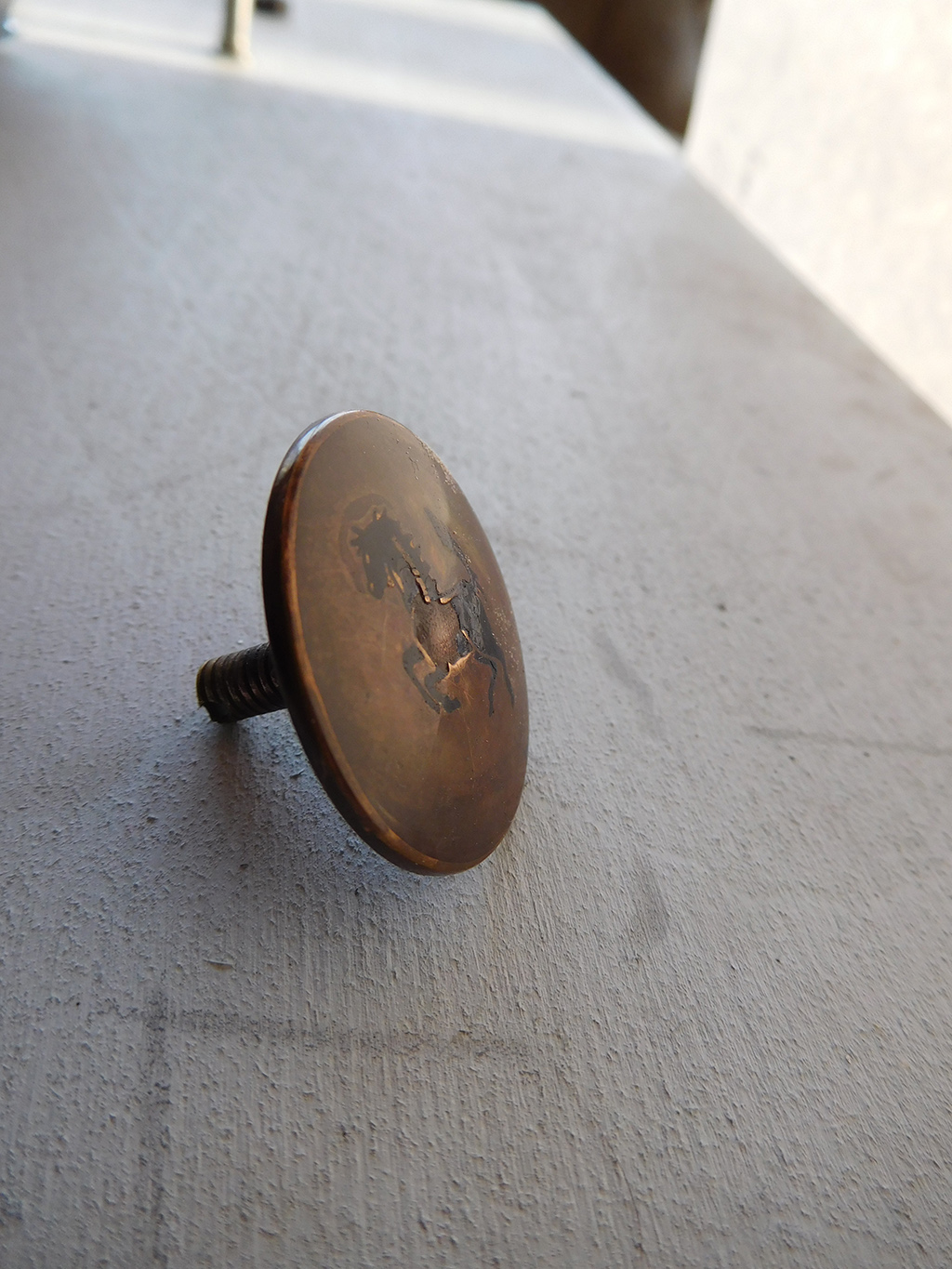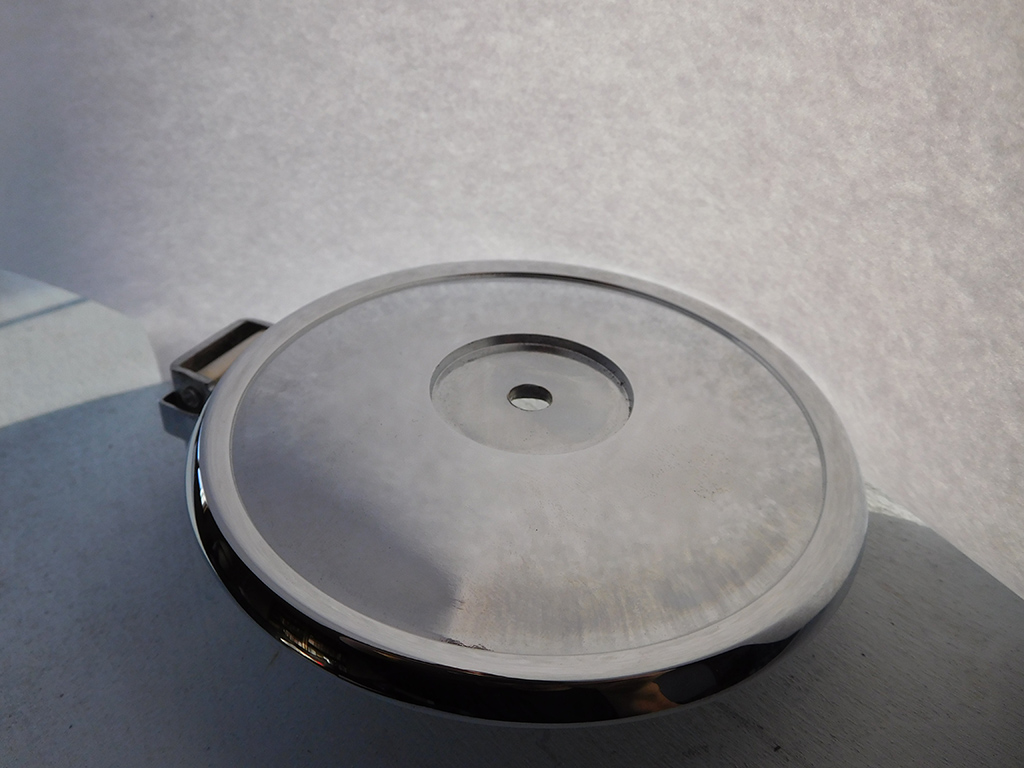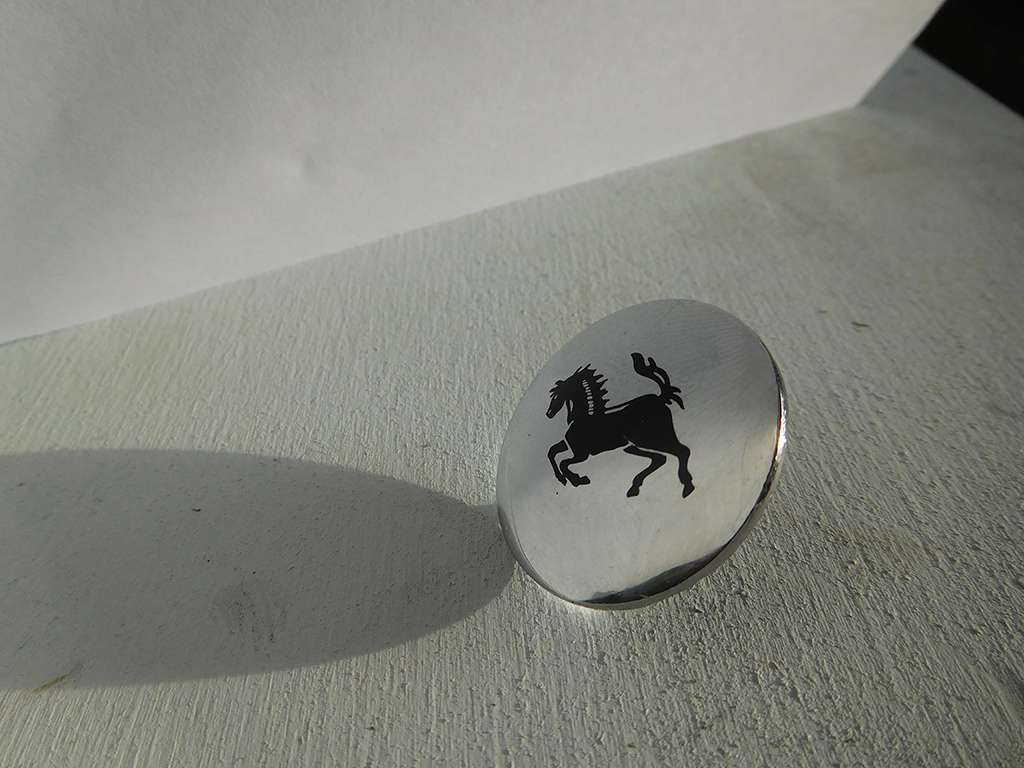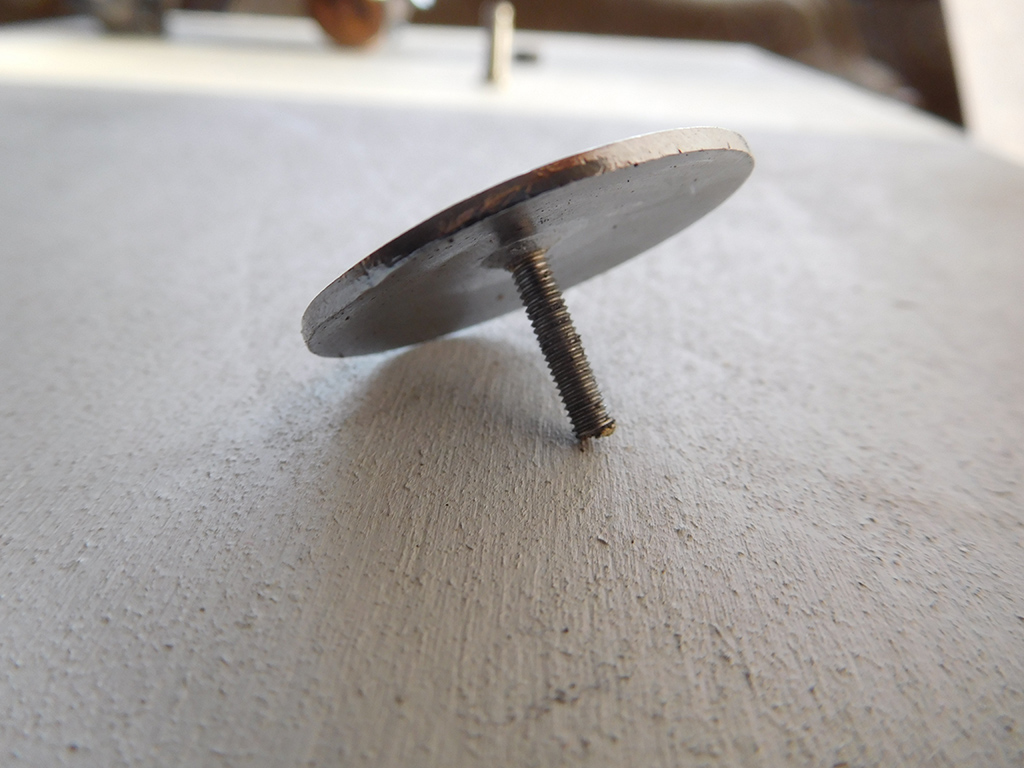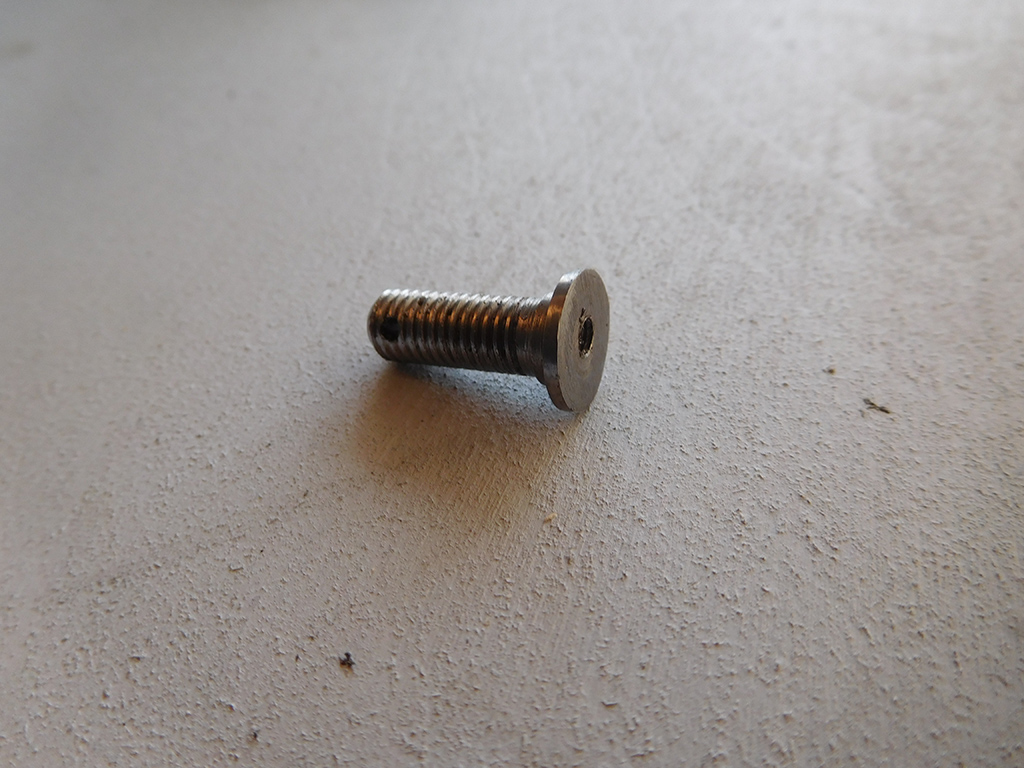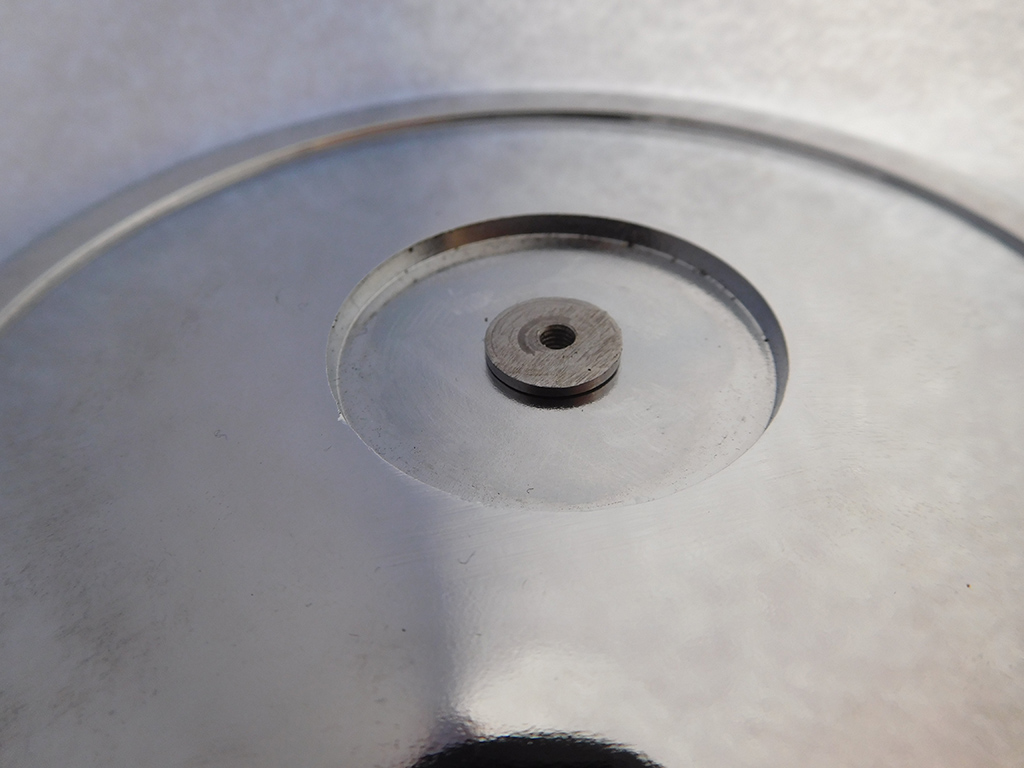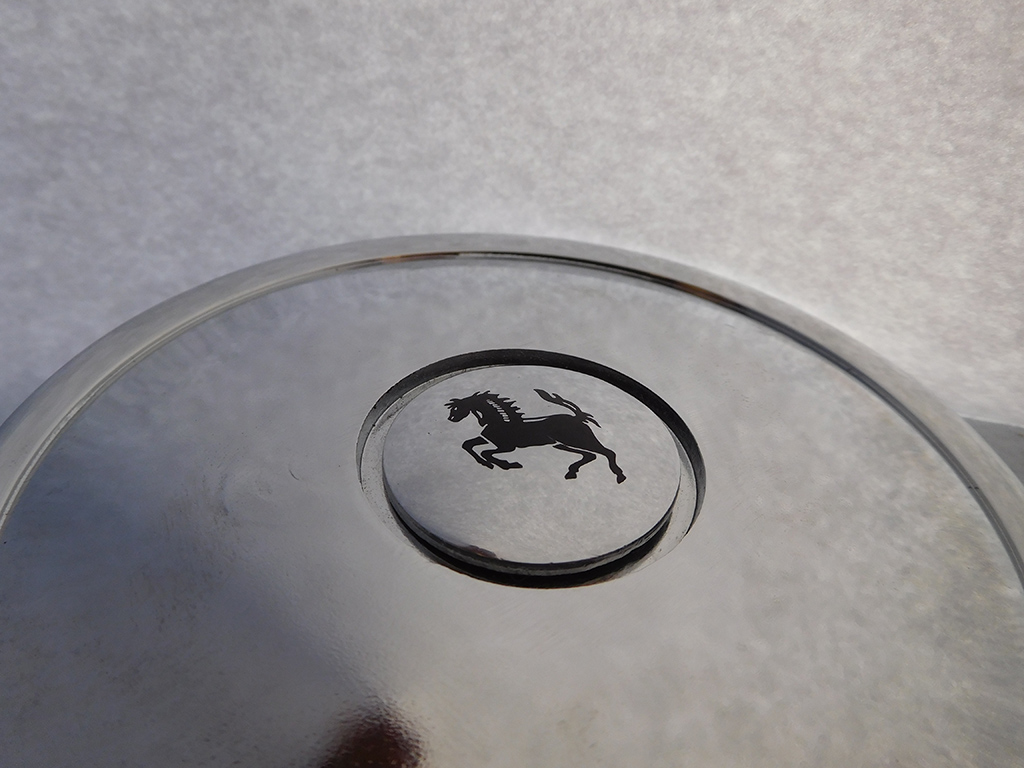GTC Gas Cap Solution
Working on these old cars seems to bring a constant flow of problems that have to solved. With one solution, I often find another one right behind it! Today’s problem was with the little Cloisonne Ferrari Horse that sits center of the fuel cap on a 330 GTC. When I sent it out for rechroming, the old glass of the cloisonne chipped off. One solution was to find someone who still does this service, and that I can trust will be as nice as the original.
This emblem not only dresses up the gas cap on the 330GTC, but also secures the rubber gasket that seals the fuel filler door. The body of the door is chrome plated as well, but part of the door needs to be painted body color after plating. I needed to sort out all the mechanical parts of this door before having the part painted.
Bob Smith, from Coachworks in Texas offered to sell me an emblem from his private stash. He told me he found a handful of these emblems when he was in Europe several years ago, and was willing to part with one for me, and I jumped a the chance! The part was a perfect match to the original detail except for one…
The post behind the emblem was a lot thinner than the original one. My concerns were that this post was not strong enough to secure the gas cap spring, and if it failed, all the parts would pop apart and skip onto the side of the road!
My solution was to machine a custom adapter on my lathe that was as thick as the original post and would have a lip that would keep it secured to the gas cap with a nut. I then drilled the center of the post and cut threads that matched the one on the new emblem. This little part took several steps, and probably took longer for me since I was never trained as a machinist, but I was still proud of my solution.
The adapter now doesn’t rely on the strength of the little brass post of the emblem to hold everything together, but was now secured with some real meat!
The look is exactly stock, but I can now rest assured things will hold together.
I love working on little project like this, but sometimes wish I had more guidance. When I’m making a part like this, I always question if there is a better way, or smarter way. I know there are many ways to machine the same part, but I hate thinking I’m choosing the least efficient or incompetent way because of ignorance! YouTube is fantastic with teaching things about machining, but I don’t think there is any substitution for experience and wisdom shared in person. The only problem is finding an old timer machinist willing to part with some knowledge with me that lives in the NY Hudson Valley! Any takers?


